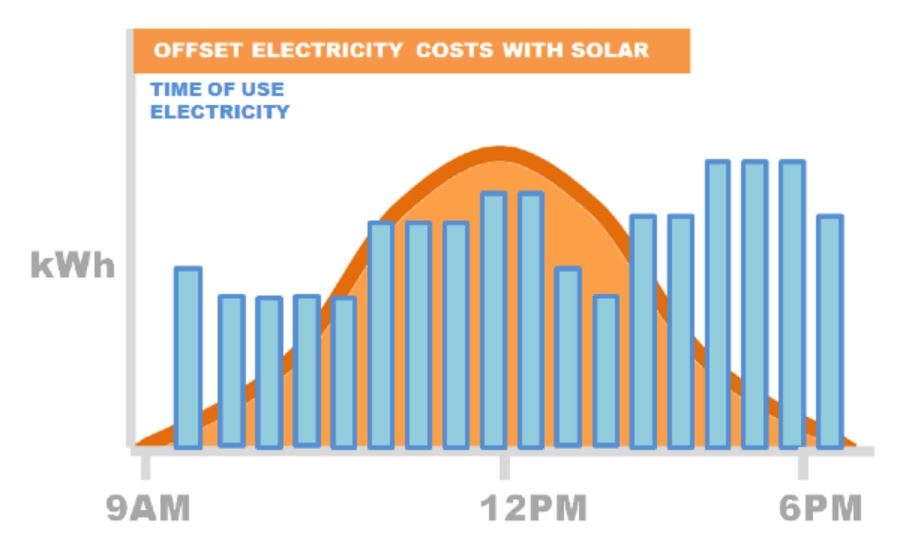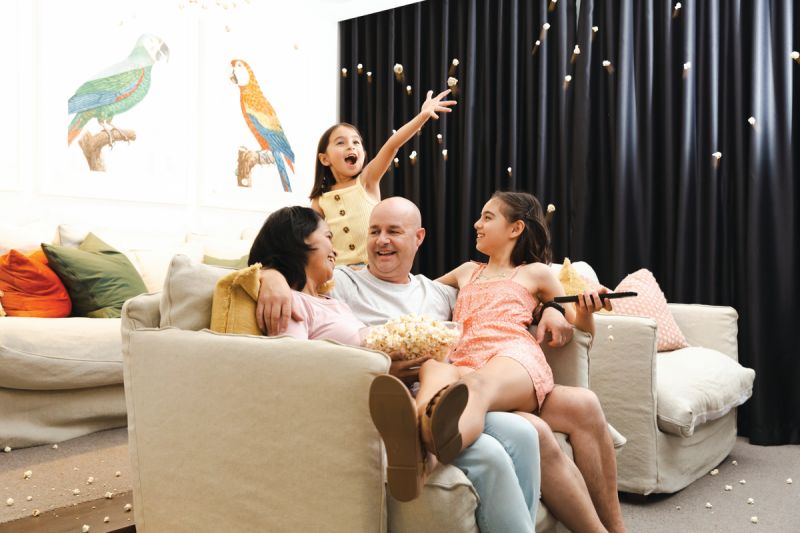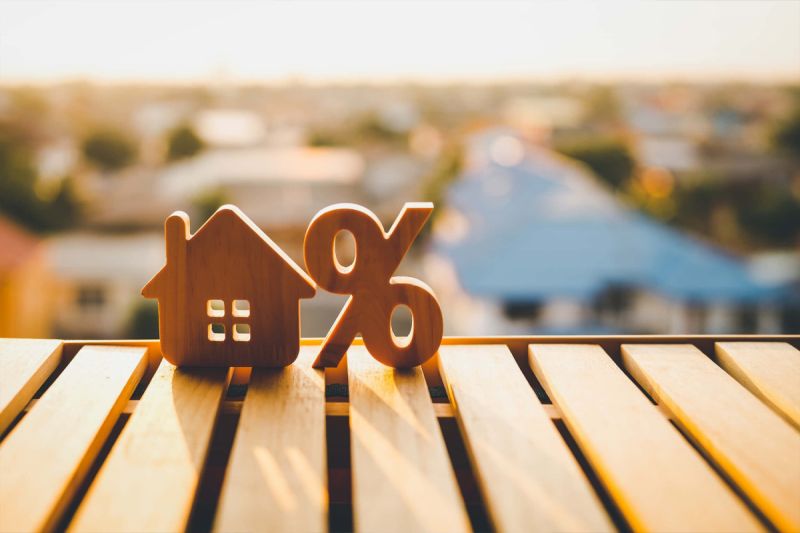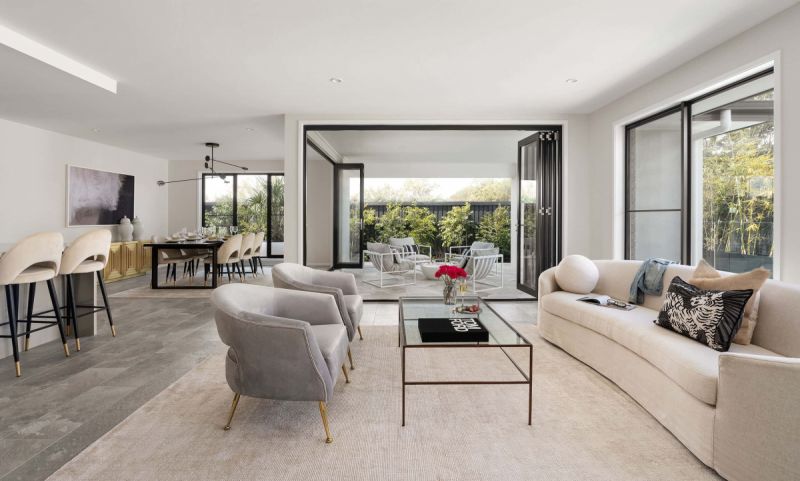Solar into your build
When it comes to building a sustainable home, solar panels are top-of-mind for many homebuyers. They’re a great way to reduce carbon footprint, save money on bills, and increase the resale value of your home. So if you’re thinking of adding solar to your home, early planning is key.
We’ve outlined a few crucial questions that you should consider before starting on your solar installation journey. Once you iron the details out, you’re more than ready to talk to your builder about solar integration and shop around for a reputable solar retailer!
1. How much electricity do you consume?
The key to ensuring you get your money’s worth is to find out how much energy your household consumes. The more efficient the use of electricity, the shorter the payback period.
Let’s break that down.
Solar panels work by transforming sunlight into energy and supplying it into homes. Any energy surplus (i.e., the energy that the household does not use) gets exported back to the grid, and you will earn credit or ‘feed-in tariff’ for your exports. Conversely, if you need to use energy at night when there is no more sunlight, you will end up purchasing power from the grid. The cost of buying from the grid is generally pricier than the feed-in tariff that you’ll get per kWh when you export.
Following this logic, it’s more efficient to consume the solar power generated by your system than to export it back to the grid. You can save more by using your generated electricity as you don’t have to buy that energy from the grid. Doing so can lessen your payback period - you break even faster!
So think about the appliances you use at home and how frequently you use them. Here are some helpful questions to guide you:
- Which appliances do you use daily?
- During which times are most people home? Do these coincide with the times the electricity consumption peaks?
- When does the electricity consumption dwindle
2. Which orientation should your solar panels face?
Since Australia is in the southern hemisphere, the best orientation for solar panels is north-facing. This is the best position to receive sunlight throughout the day.

IMAGE: Energy consumption against energy production with north-facing panels (source: Envirogroup)
North-facing panels mean that the peak energy production is during midday. If you can do most of your energy-heavy consumption during this time, you can maximise the ‘free’ solar power instead of buying from the grid if you were to do it at night. The common workaround is to purchase solar battery units that will store the energy surplus before exporting it back to the grid, but this can come with a hefty price tag.
If your solar panels absolutely can’t face north, don’t despair. There has been success seen in installing solar panels that face east (power production peaks in the morning) and west (power production peaks late afternoon). Some homeowners will even combine north-, east-, and west-facing panels - especially those that use electricity earlier and later in the day (and don’t have solar battery units). At the end of the day, it depends on which suits your energy consumption best (among other factors).
3. Which angle should you position your roof towards?
There is an optimum angle for solar panels in Australia that’s determined by their perpendicular position to the sun. The easiest way to find out is through the capital city’s latitude. In Brisbane, the latitude is measured at -27 degrees. This means that the roof pitch should be angled at 27 degrees to maximise the solar power it can generate.
4. Is there shade around your block?
The next thing to consider is whether or not there are objects in your surroundings that can obstruct the sunlight from hitting your panels. Ask yourself these questions:
- How tall are your neighbours’ homes? Are they overshadowing your home?
- How close are they to your house?
- Do you have any enormous trees surrounding your block?
- Is there any multi-storey building or an apartment block near you that may cast a shade on your roof?
While solar panels can capture sunlight indirectly, you’d want to optimise your power production by avoiding any potential blockage around you.
5. Which roof material should you use?
In general, you can install solar panels on most types of roofing. Certain materials complement solar panels better - making the installation more efficient and less costly.
- Metal - has screws in place as part of installation which can be reused for solar panels, reducing the need for extra drilling and costs.
- Tiles - common among most Australian households, but requires a bit more labour than a metal roof. You may need to remove and reapply some tiles once the panels are mounted above the roof.
- Composite/Asphalt Shingle - one of the most common and cheapest roofing materials. It’s easy to install solar panels on this type of roofing as you can easily slide the footing under the shingles and secure them.
If you’re looking to build a home with a flat roof, position your solar panels on an angle to capture as much sunlight as possible. Klip-lok (tin) roofing — the common material for flat roofs — is quite easy to install solar panels onto. No drilling needed, just mounting brackets.
6. Can you get rebates and incentives?
Government rebates and incentives change annually. Exercise your due diligence as these vary from state to state. In Southeast Queensland, solar retailers offer various feed-in tariffs and you can shop around for the best deal. The Queensland government also outlines in detail the various ways to finance a solar installation - purchasing outright, using a solar power purchase agreement, getting a solar loan, or leasing a solar power system.
7. Does it fit into your budget?
Sustainability is no less an investment; it may come at a cost now, but with more savings in the long run. According to Solar Quotes, these are the average price ranges for good quality panel systems in Australia (after the rebates):
| 3kW | $3,500 – $5,000 |
| 5kW | $4,500 – $8,000 |
| 6kW | $5,000 – $9,000 |
| 10kW | $8,000 – $12,000 |
While this may seem a lot, the typical payback period in Australia is around 5-7 years and you’ll have lower electricity bills moving forward. You already know how to shorten this period - self-consume your energy and avoid importing from and exporting to the grid!
The Verdict
Incorporating solar into your build has many long-term benefits. If it fits into your budget, it can make a tremendous difference down the line. Take into consideration all factors mentioned and do plenty of research before deciding to add solar pannels to your home. Don’t forget to speak to your builder early about your plan to install solar panels - they can support your dream of building a sustainable home!





